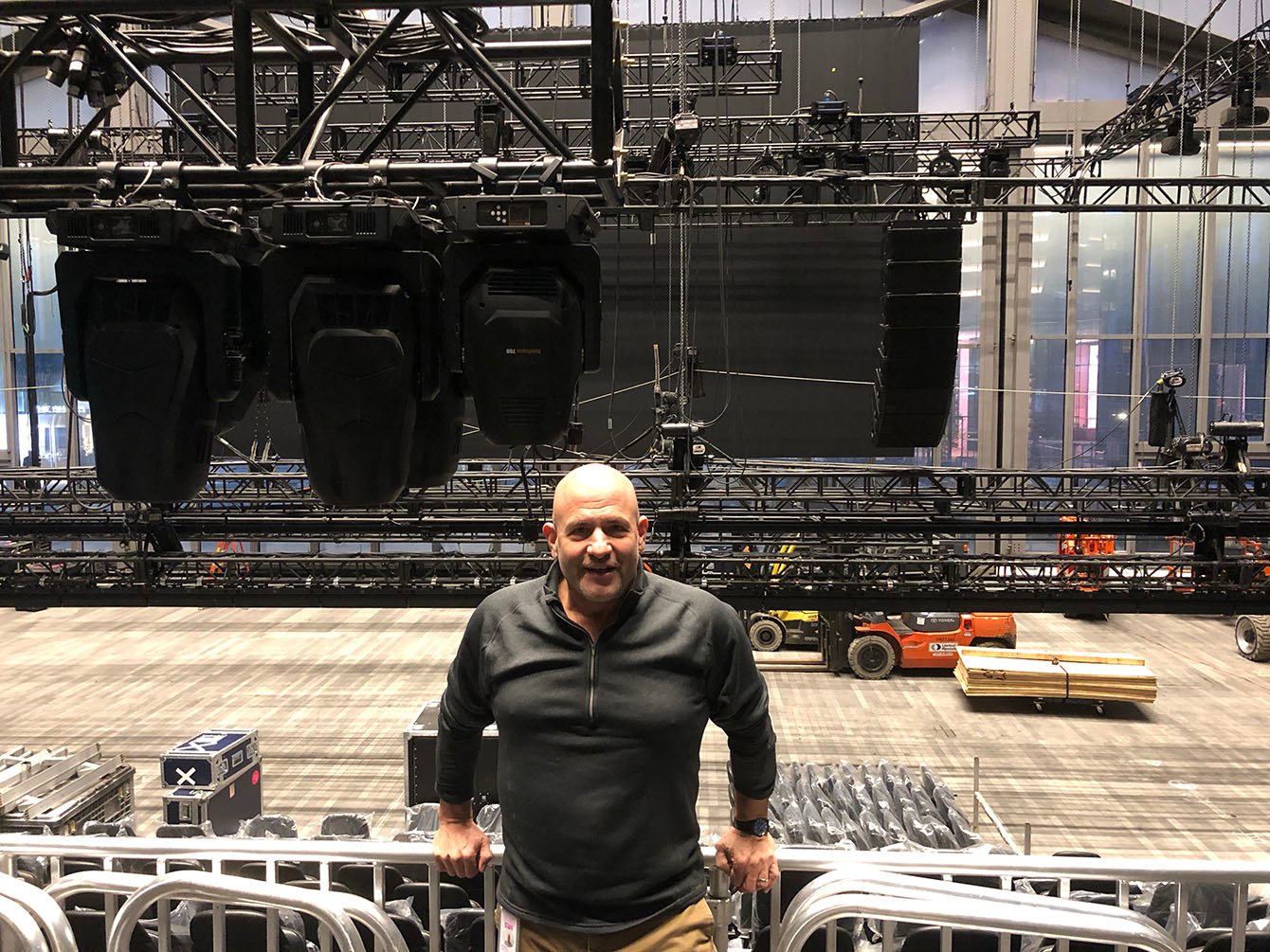Marc Warren fills the challenging role of director of production at The Shed, where he oversees all of the technical aspects of production. His job entails working closely with Alex Poots, CEO and artistic director, as well as the producing and curatorial teams to develop and realize new commissions from artists, and the events team to support the event rental program.
Live Design: How much were you involved with the architects and theatre consultants during the design/build?
Marc Warren: I started consulting for The Shed about two and a half years ago and have been full-time for the past one and a half years. Although the building design was basically complete when I started, I have worked extensively with Diller Scofidio + Renfro and Rockwell Group on many of the architectural details. I also had extensive interaction with Fisher Dachs Associates (FDA), the theatrical consultant, and Akustics, the acoustic and audio consultants. I took what the consultants initially suggested and tailored it to where I saw The Shed was heading programmatically.
Live Design: What are the various production spaces and how do they work (in a nutshell)—and what about the movable roof...how and when will it deploy?
MW: Let’s start from the bottom. We have the Level 2 Gallery, which is primarily a visual arts space. Also on Level 2 is The McCourt, the movable part of the building. There is a set of doors between the Level 2 Gallery and The McCourt, which is movable and allows the two spaces to be linked together if desired.

The McCourt is the movable part of The Shed and is the feature of the building that most people are curious about. The McCourt will be moved sporadically throughout the year. The roof of The McCourt has a built-in theatrical grid with a capacity for an additional live load of 100 tons of production equipment. We have a complement of 80 chain motors on stands that sit above the theatrical deck, which is about 115 feet above the plaza level. The motors are controlled by the TAIT Navigator System, which we are operating via a Polaris Console. There are three grid traps that open to allow us to shuttle production equipment up to the grid level from the plaza via high-speed winches. We have a full complement of black anodized Tyler Centerline™ Truss. We have a "house" lighting repertory plot and a fully automated lighting rig. It was important to make it as flexible as possible as there were no accessible architectural lighting positions. We have a full d&b array speaker system.
The Level 4 Gallery (on Level 4) is designed for visual art but has a movable wall that can divide the space in half for different uses. There is a set of glass doors on the east end of the building, facing into The McCourt, which, like Level 2 Gallery, can be opened. We can use that end of the space as a “balcony” into The McCourt, and when the movable wall is deployed, we are able to use the western end of the room concurrently for visual art installations.
The Griffin Theater is on Level 6, a fabulous black box space that can be split into two smaller spaces using a pair of central movable walls. When both walls are deployed, they create a central hallway separating the two spaces. The Theater has a fixed-pipe grid throughout with strong points to hang motors. We have theatrical lighting power and data distributed throughout the grid along with AV power and data. We also have a retractable seating system that allows us to go from a 500-seat full configuration to two spaces with smaller configurations.
LD: What is the size / breakdown of in-house tech staff?
MW: In addition to my role, there is a production manager, technical director, two production supervisors, and a production coordinator. We have crew heads in The McCourt and in The Griffin Theater. We have a collective bargaining agreement with IATSE Local 1 for stagehands.
LD: What are the biggest challenges at The Shed in terms of production?
MW: The challenge is working with the different artistic formats that co-mingle in much of The Shed’s programming. A great example was our installation in the Level 2 Gallery, Reich Richter Pärt, a fully realized visual art exhibition with live music performances, showing four times per day along with a film. It is marvelous but it was a challenge to navigate the difference in process and vocabulary. You have to listen very carefully and make sure you understand truly what is being asked. Assumptions are not allowed.
LD: There is so much buzz about The Shed. What makes it so special in your eyes?
MW: I have to say that so far, my co-workers who are breathing life into the building have made it special for me. They are an amazing group of people. I have done hard work before in my career but getting the building open and installing all of our shows, all opening within 24 hours of each other was the hardest thing I have ever done. If not for the tenacity of this amazing group of people, it would not have happened.